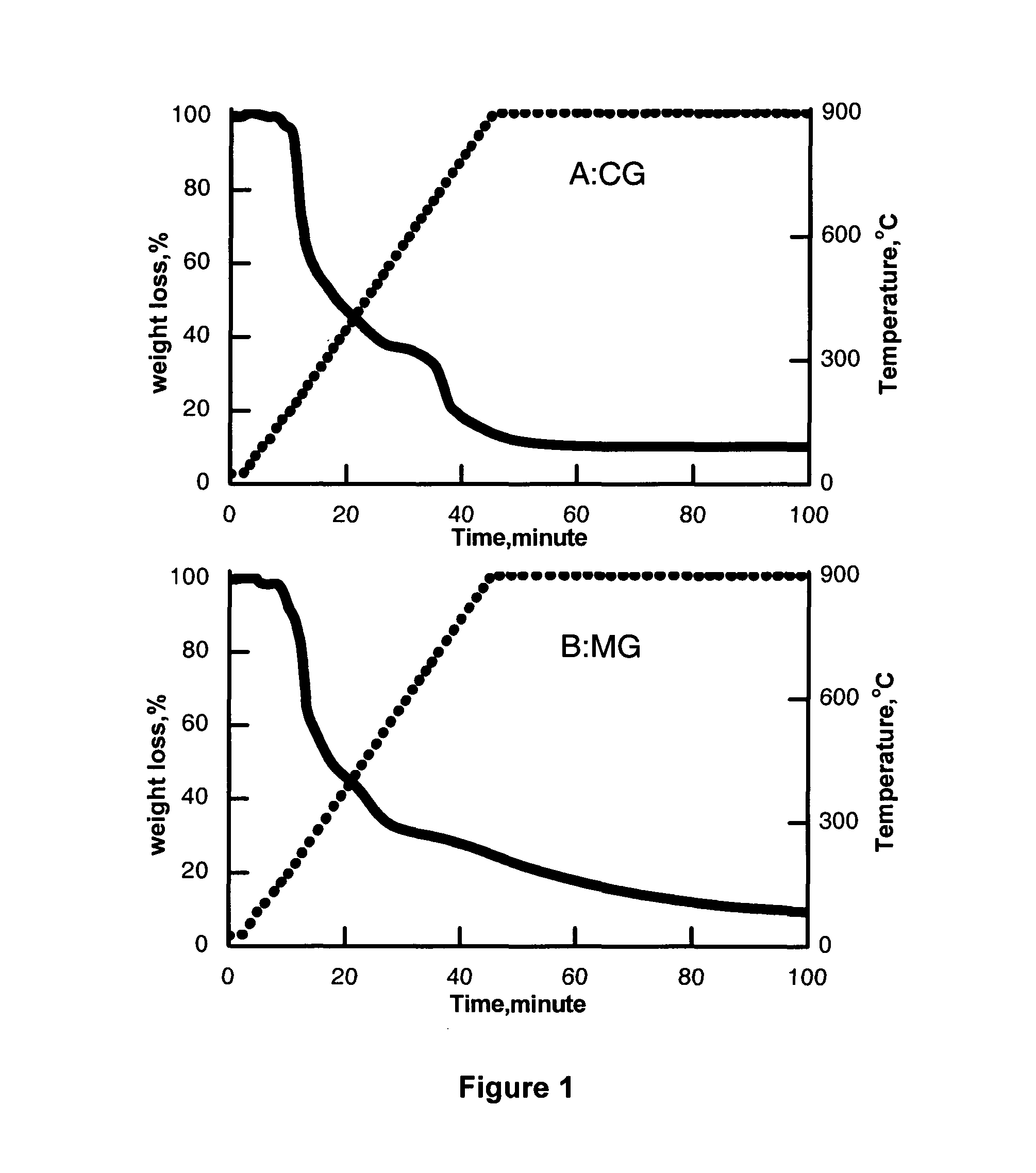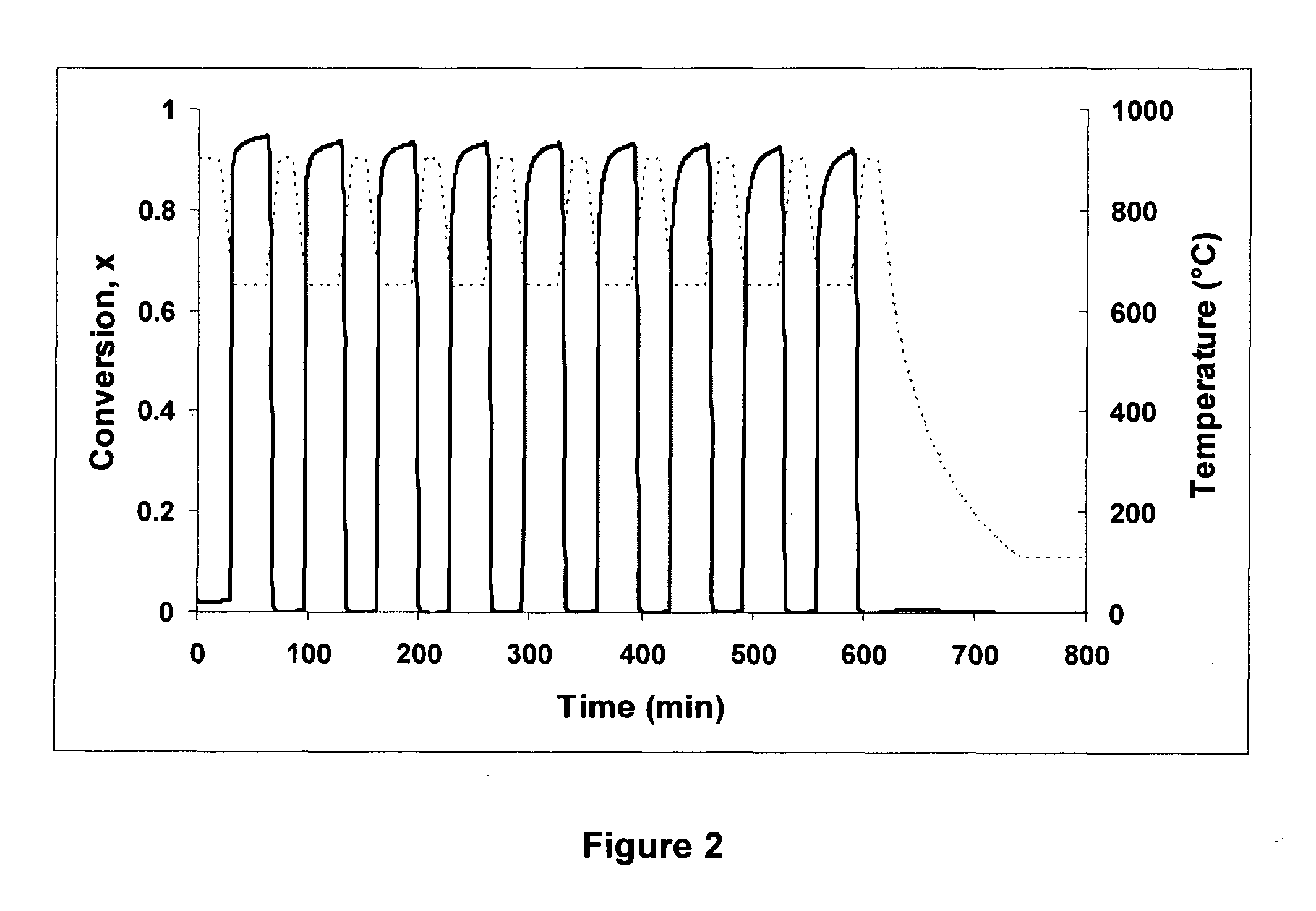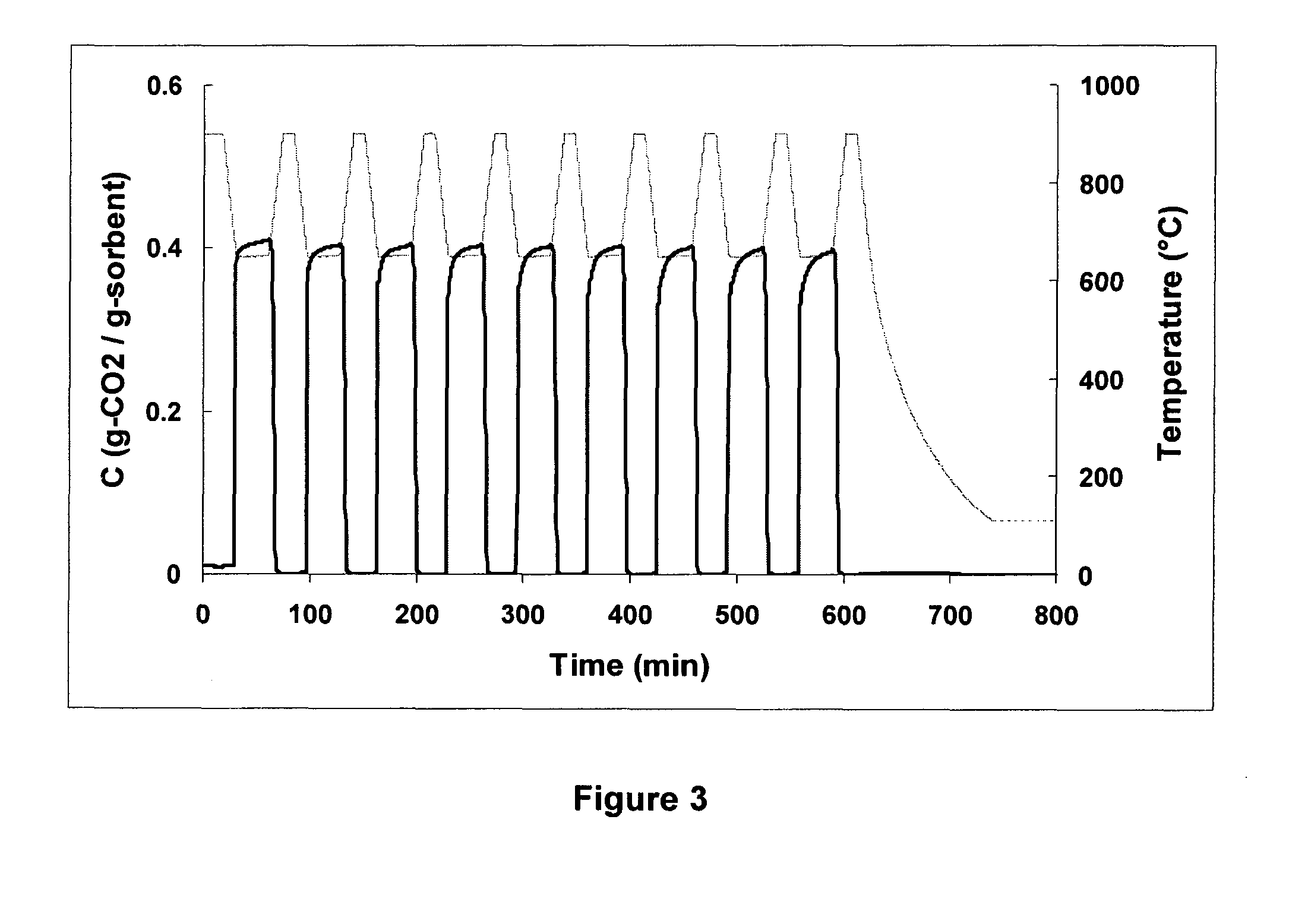Method for producing sorbents for co2 capture under high temperatures
a high temperature, sorbent technology, applied in the preparation of alkaline-earth metal aluminates/aluminium-oxide/aluminium-hydroxide, separation processes, etc., can solve the problems of reducing the reversibility of cao and cao-based materials, the most expensive component of the ccs system, and the sub>2 /sub>capture process is the most expensive component in most ccs systems, so
- Summary
- Abstract
- Description
- Claims
- Application Information
AI Technical Summary
Benefits of technology
Problems solved by technology
Method used
Image
Examples
Embodiment Construction
[0058]The invention is described below predominantly with reference to the inert porous metal support being MgO. However, as it would be appreciated by the skilled person, other materials may be substituted for, or used in conjunction with, MgO.
[0059]CMO sorbents were synthesised having CaO supported on MgO. Without wishing to be bound by theory, it is believed that the MgO component within the sorbent is non-reactive with CaCO3 at the reaction conditions, and thus functions as an inert porous that separates the CaO (ie its crystals or grains). It is believed by the inventors that the sintering of CaCO3 in the CO2 loaded sorbent is largely hindered because the CaO grains inside the sorbent are separated by MgO. That is, the method of the present invention produces ultrafine CaO particles uniformly separated by an inert support material. Such a CMO sorbent can be reliably used over a number of cycles with less reduction in reversibility as compared to prior art CaO systems. For insta...
PUM
| Property | Measurement | Unit |
|---|---|---|
| Temperature | aaaaa | aaaaa |
| Fraction | aaaaa | aaaaa |
| Fraction | aaaaa | aaaaa |
Abstract
Description
Claims
Application Information
 Login to View More
Login to View More - R&D
- Intellectual Property
- Life Sciences
- Materials
- Tech Scout
- Unparalleled Data Quality
- Higher Quality Content
- 60% Fewer Hallucinations
Browse by: Latest US Patents, China's latest patents, Technical Efficacy Thesaurus, Application Domain, Technology Topic, Popular Technical Reports.
© 2025 PatSnap. All rights reserved.Legal|Privacy policy|Modern Slavery Act Transparency Statement|Sitemap|About US| Contact US: help@patsnap.com



